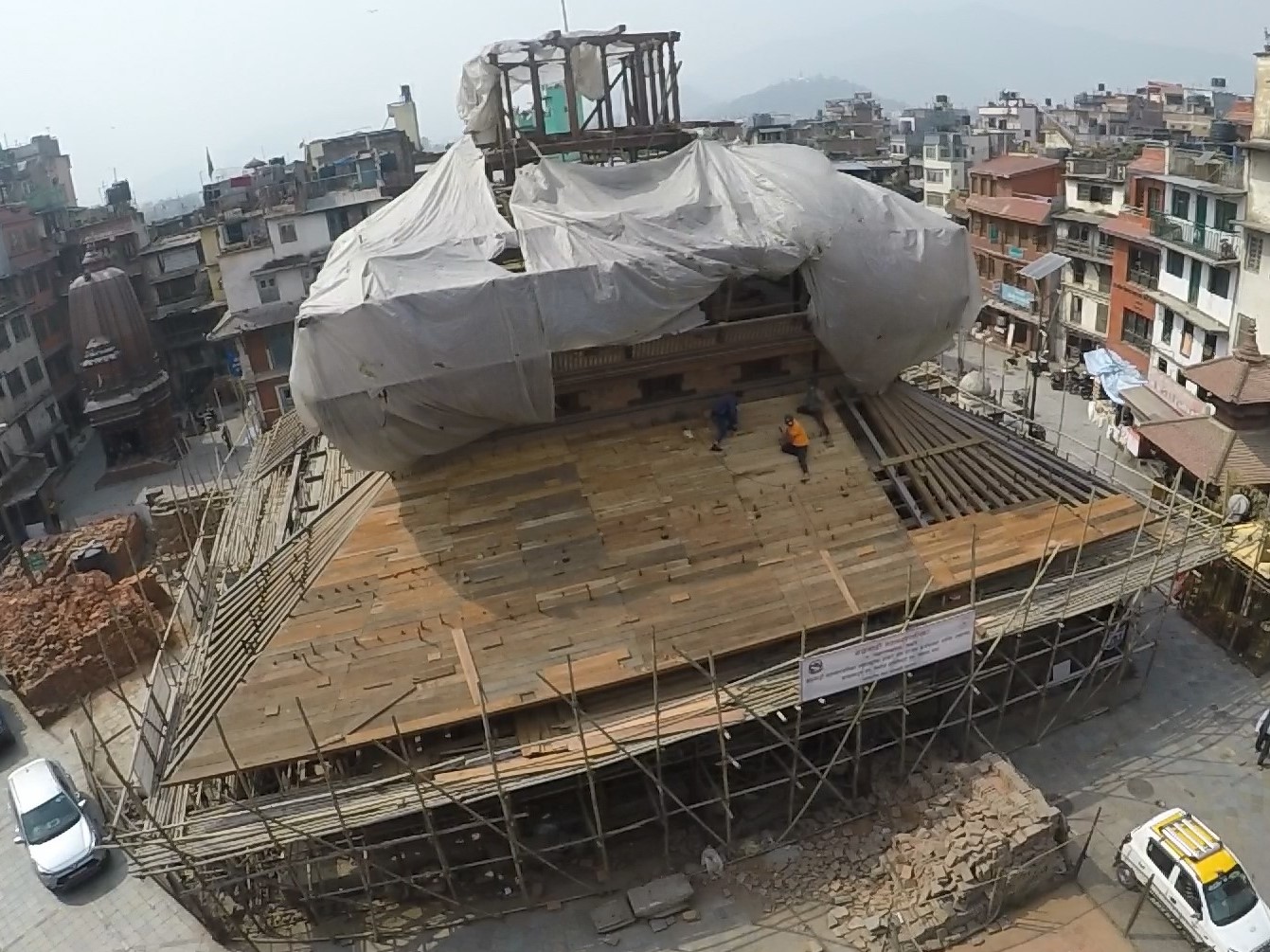Reconstruction of Kasthamandap to be complete by July

By Kshitiz Siwakoti, Kathmandu, Mar. 19: Reconstruction of the Kasthamandap Temple, a wood covered shrine as well as shelter built originally in the 7th century, will be complete by this fiscal year (mid-July).
The temple enlisted in the UNESCO world heritage site was devastated by the 2015 earthquake.
The minutest of the wooden carvings has been done in exactly the same way as its predecessor and the construction materials being used are no different than those used in the original form of the temple.
Chairperson of the Kasthamandap reconstruction committee, Rajesh Sakya, said that the monument is a testament to our prosperous past since the structure was highly advanced for its time of construction in the 7th century.
Four years ago, the Department of Archeology had estimated the entire project to cost Rs. 1.9 million, however, Shakya said that the project will not cost more than 1.2 million rupees.
“I am very pleased to share that we have saved the taxpayers' money for other purposes too as we will not require the sum of allocated budget,” Shakya said.
The rebuilding of the Kasthamandap has been entirely financed by the Kathmandu Metropolitan City.
It is believed that the Kasthamandap was constructed to house traders travelling between India and Tibet in China and was also used as a place of assembly for the king and his subjects.
Keeping up with the legacy, the whole of the monument has been constructed using Sal wood. Shakya mentioned that trees have not been unnecessarily cut but used from places where trees needed to be cut for other development projects. “The wood was sourced from Chitwan, trees from Mahottari that were cut during the construction of BP highway, from Amlekhgunj during the construction of Barauni-Amlekhgunj pipeline and from Dhangadhi,” Chairperson Shakya said.
Another interesting thing to note is that the bricks that were specially baked for the construction of the monument have been inscribed with the date of the construction i.e, ‘Nepali Sambat 1139.’
Shakya said that the reason behind this is that if the monument were to meet the same fate of the 2015 earthquake people would know when Kasthamandap was built by the carvings inscribed on the brick.
Kasthamandap, the name of the monument from which the city of Kathmandu derives its name, will have her roots soon resurrected to life.
Recent News

Do not make expressions casting dout on election: EC
14 Apr, 2022
CM Bhatta says may New Year 2079 BS inspire positive thinking
14 Apr, 2022
Three new cases, 44 recoveries in 24 hours
14 Apr, 2022
689 climbers of 84 teams so far acquire permits for climbing various peaks this spring season
14 Apr, 2022
How the rising cost of living crisis is impacting Nepal
14 Apr, 2022
US military confirms an interstellar meteor collided with Earth
14 Apr, 2022
Valneva Covid vaccine approved for use in UK
14 Apr, 2022
Chair Prachanda highlights need of unity among Maoist, Communist forces
14 Apr, 2022
Ranbir Kapoor and Alia Bhatt: Bollywood toasts star couple on wedding
14 Apr, 2022
President Bhandari confers decorations (Photo Feature)
14 Apr, 2022










